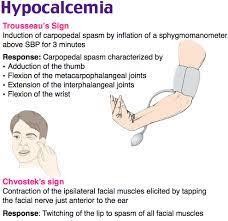The healthcare provider performs a paracentesis on a client with ascites and 3 liters of fluid are removed. Which assessment parameter is most critical for the nurse to monitor following the procedure?
Increased heart rate
Increased urine production
Increased mental alertness
Increased breath sounds
The Correct Answer is A
Choice A rationale: This is because removing a large amount of fluid from the abdominal cavity can cause a sudden decrease in intra-abdominal pressure, which can lead to hypovolemia and hypotension. The body compensates by increasing the heart rate to maintain cardiac output and perfusion.
Choice B rationale: This is not directly related to paracentesis and may indicate other conditions.
Choice C rationale: This is not directly related to paracentesis and may indicate other conditions.
Choice D rationale: This is not directly related to paracentesis and may indicate other conditions.
Nursing Test Bank
Naxlex Comprehensive Predictor Exams
Related Questions
Correct Answer is C
Explanation
Choice A rationale: Performing active range of motion exercises may not be safe or appropriate immediately following a hemorrhagic stroke.
Choice B rationale: Maintaining the head of bed flat or at a 30-degree position might be used for ischemic strokes but not necessarily for hemorrhagic strokes.
Choice C rationale: Teaching measures to avoid the Valsalva maneuver (straining during activities like defecation) helps prevent sudden increases in intracranial pressure, which can be detrimental after a hemorrhagic stroke.
Choice D rationale: Monitoring for Battle's sign (bruising behind the ears associated with basilar skull fracture) is not relevant in the care of a hemorrhagic stroke.
Correct Answer is C
Explanation
Choice A rationale: Chvostek and Trousseau signs are not typically associated with hypothyroidism.
Choice B rationale: These signs are not commonly related to pineal tumors.
Choice C rationale: Chvostek and Trousseau signs, indicating neuromuscular irritability due to hypocalcemia, are often seen in hypoparathyroidism.
Choice D rationale: Chvostek and Trousseau signs are not characteristic findings in pheochromocytoma.

Whether you are a student looking to ace your exams or a practicing nurse seeking to enhance your expertise , our nursing education contents will empower you with the confidence and competence to make a difference in the lives of patients and become a respected leader in the healthcare field.
Visit Naxlex, invest in your future and unlock endless possibilities with our unparalleled nursing education contents today
Report Wrong Answer on the Current Question
Do you disagree with the answer? If yes, what is your expected answer? Explain.
Kindly be descriptive with the issue you are facing.
